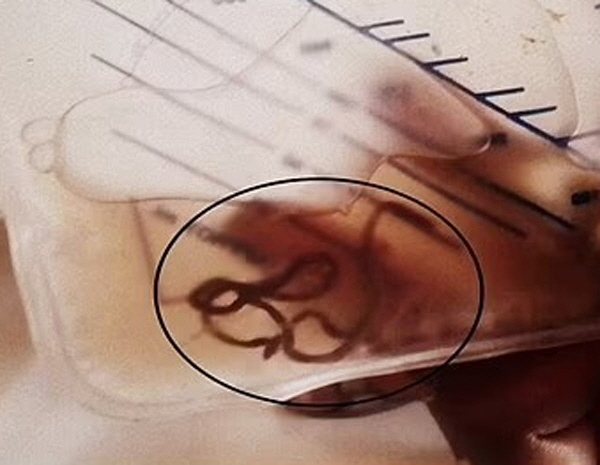30cm parasites coming out of the bladder...It's contagious when you eat raw fish
Apr 21, 2025
|
According to Live Science, a 35-year-old man living in Meerut, Uta Pradesh, India, visited the hospital when he was unable to urinate with a high fever. The medics who examined found that his skin was pale, his kidneys were swollen, and his heart rate increased.
As a result of blood tests, parasitic infections were suspected.
Medical staff who prescribed antibiotics inserted a catheter (a thin medical tube) to empty the patient's bladder so that urine could be drained.
On the second day of hospital admission, the patient informed the medical staff that there was wriggling parasites and some blood in the catheter bag.
According to a report published in the Journal of Clinical and Diagnostic Research, the red parasite was 30 cm long and about 3 to 4 mm in diameter.
The parasite type was found to be a 'diotophymiasis (giant kidney worm)' male. Females of this parasite are said to grow up to 1 m or more.
He claimed to eat mostly raw fish from the lake near his house. Medical staff estimated that this was likely the cause of his infection.
In general, larvae of giant nephropods are latent in the body of fish or frogs, and can be infected in humans if eaten raw or undercooked.
Drinking water without boiling where infected fish or frogs live is also a potential transmission route.
Once in the human body, parasite larvae can travel to the kidneys and grow into adult parasites and live for up to five years.
When infected, it can cause problems such as blocking urine flow to the bladder, kidney edema, and tissue necrosis.
Mild infections can be treated with medication, but more severe infections may require surgery, such as removing the entire kidney.
Medics analyzed patient A's urine for 3 days, but found no signs of additional parasites or eggs.
The patient was unilaterally discharged even after being hospitalized for a short period of time, despite the dissuasion of the medical staff.
In fact, medically, human infections of giant kidney worms are very rare. It is more commonly found in carnivorous mammals such as dogs, otters, and weasels.
According to a 2019 study by Chinese researchers, there were only 37 cases of human infection, and some were infected with 15 species of parasites.
Half of the patients ate raw fish or undercooked fish or frogs, while the other half had no known potential transmission route.
Medical staff pointed out that due to the rarity, patients infected with giant kidney disease are often misdiagnosed.
This article was translated by Naver AI translator.














